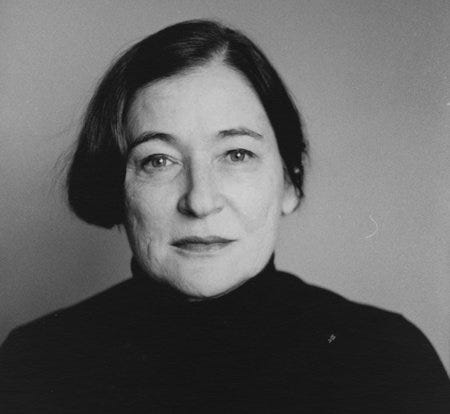(Photo by Joyce Ravid)
I first started working for Mark Morris and his Dance Group in the late 1990’s, when the brilliant 1993 biography Mark Morris by Joan Acocella was relatively new. I read the book several times, enraptured by the Acocella prose and enthralled by the Morris story. Since I didn’t have much history with dance, Acocella taught me a great deal about how to “see” Mark’s work.
The great choreographer likes to talk about anything but the deeper meaning of his dances, but I believe Mark would sign off on most if not all of Acocella’s superlative analysis — or, at least the analysis presented in the biography. Later on, not all of Acocella’s comments were uniformly positive when she reviewed new Morris dances for The New Yorker. That was another lesson, that a good critic called it like they saw it, even if the critic was friends with the artist.
To be clear, Acocella was almost always supportive of Morris, also because she truly understood what the man was about. In a 2001 she summed up where Mark had been and where he was heading in the New Yorker article “Growing Up.”
Morris was the most controversial choreographer of the nineteen-eighties. Many people loved him immediately. And many people loathed him, partly because he was a young smart-aleck (there were many who-does-he-think-he-is reviews), but largely, I think, because his work was such a mixed business. On the one hand, he was an eighties personality: ironic, outrageous, heavy into "styles." On the other hand, he was earnest, humanistic, a child of the Great Tradition. Having seen the latter kind of work—dancers in massed choruses, inquiring about the state of their souls ("Gloria," "Stabat Mater")—people didn't understand how he could also do the former kind of work, perform in his underpants, with a paper bag over his head, to parlor songs ("The Vacant Chair").
[…]
First, there are the mixed emotions. In Morris's work, the world is beautiful, and also a nightmare. And the nightmare is not just frightening; it is funny. Second, the work is imbued with classical values, which act as a kind of binder for those mixed feelings. Like Handel or Mozart, Morris favors a firm, harmonious structure; if he didn't, I don't know how we would navigate the dark waters of his work. Third—and this, too, is classical—he shows us nature. Morris does not specify; he generalizes. His work is not about some small, recently discovered, postmodern department of our sensibilities. It is about human experience. He boldly says as much. These are the qualities that have endeared him to his audience: people feel they are being told about their lives.
I met Acocella a few times, and she was a classic New York City personality: a bit rough and tumble, gravel-voiced, right about everything, sympathetic to misfortune. She called me once when a young relative needed a piano teacher. “I don’t know, Ethan! The kid might be nobody, or he might be Schnabel!” she explained loudly over the phone.
The world of arts and letters will miss her.
Acocella wrote about much else besides dance, including at least two pieces about crime fiction.
The look at Agatha Christie in the New Yorker is one of the best pieces on the Queen of Crime I’ve ever read. This article came out in 2010, by which time I had begun producing a few bits and pieces of my own crime fiction criticism for Do the Math. I had been considering doing a deeper dive on Christie — I still have notes for a complete survey of the canon — but Acocella’s comment is so definitive I fear she left me with nothing else to say.
The final paragraph about Miss Jane Marple is absolutely perfect.
As for crime, she seems to think that it’s been around forever, and that small, stable communities offer no protection. “One does see so much evil in a village,” she says. She enjoys describing the poisonings, clubbings, rapes, stickups, and so on that have occurred in St. Mary Mead. This is comical, and the comedy is there, as the theorists have claimed, to tame evil. But always, in Christie, there is a melancholy note, a skepticism. In The Body in the Library (1942), the body belongs to Ruby, a dance instructor in a hotel. She has been strangled with the satin waistband of her party dress. “She may, of course, have had some remarkable qualities,” a police commissioner says of the girl. “Probably not,” Miss Marple answers.
Just today I read Acocella’s overview of Elmore Leonard in The New York Review of Books. She really knows this turf, certainly better than I do, and gives highest marks to Out of Sight.
In the eleven years from 1985 to 1996, he produces his five best novels: Glitz, with Vincent Mora and the father in the sky; Freaky Deaky, with Mr. Woody on the raft; Get Shorty, with Chili Palmer; Maximum Bob, with Elvin killing the man he thought was the one had got the woman to kill Roland; and Out of Sight (1996), whose hero has robbed over two hundred banks.
Until this moment I would have confidently declared that Leonard peaked much earlier, when the novels were still set in Detroit. (The tough-as-nails Fifty-Two Pickup and City Primeval would have gotten my nod as the best, not that I don’t see the appeal of the wonderful Los Angeles satire Get Shorty.) So, now I need to investigate further, do some reading and re-reading, and once again compare notes with the late Joan Acocella.




It's very hard to know that she's gone. I'll re-read her, at least-- that's always worth doing.